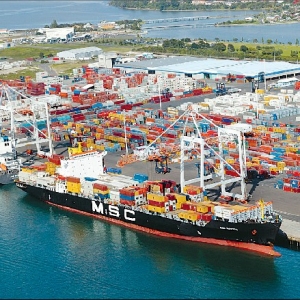The merchandise terms of trade rose 4.1% in the March 2013 quarter, due to export prices rising and import prices falling, Statistics New Zealand says.
This means that in the March 2013 quarter, 4.1% more merchandise imports could be funded by a fixed quantity of merchandise exports than in the December 2012 quarter.
"The terms of trade rose this quarter, after falling for six consecutive quarters from their peak in 2011," prices manager Chris Pike says. "Export prices rose for the first time since the December 2011 quarter."
In the March 2013 quarter, the price of exported goods rose 1.9%, reflecting higher prices for dairy. Lower meat prices partly offset the rise. Seasonally adjusted export volumes rose 0.9%, led by meat. The trend for export volumes has risen for seven consecutive quarters.
Seasonally adjusted dairy export volumes rose 2.2% after a fall of 13% in the December 2012 quarter, while prices rose 6.8% after six consecutive falls. Both volume and price movements were strongly influenced by milk powder.
Seasonally adjusted dairy values rose 3.3% after a 14% fall in the December 2012 quarter. Seasonally adjusted meat export volumes rose 5.3% (led by beef and veal), following a small fall in the December 2012 quarter. Meat prices fell 3.1%, led by lower lamb prices. Seasonally adjusted meat values rose 0.8%.
The price of imported goods fell 2.1% in the March 2013 quarter. The fall was broadly based, influenced by a higher New Zealand dollar. Seasonally adjusted import volumes rose 2.1%, led by higher volumes of motor spirit.
The price and volume indexes for exports and imports of goods are compiled mainly from overseas trade data.










